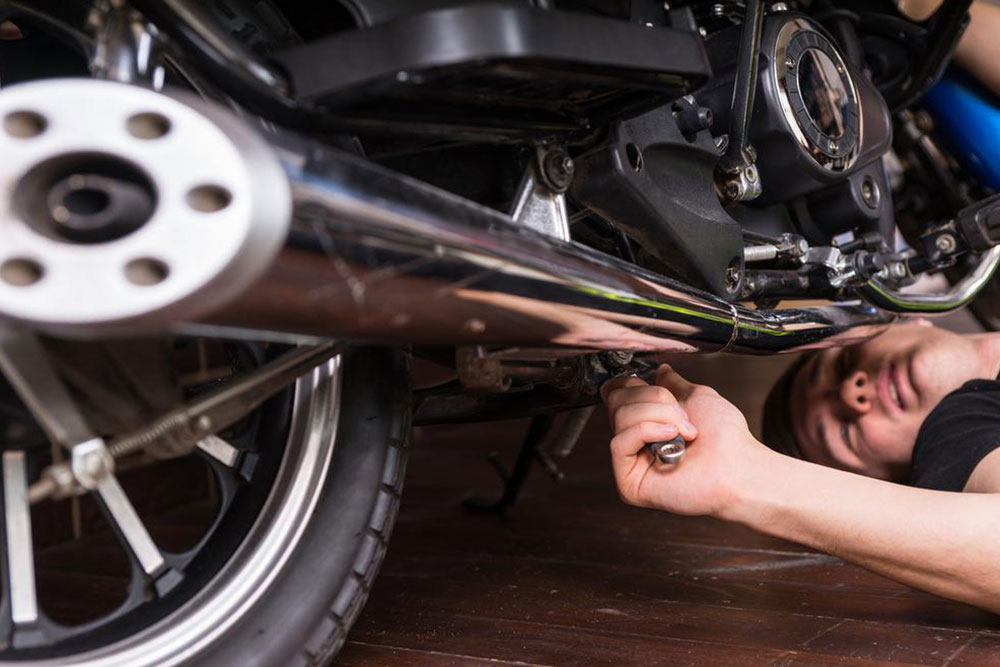Your personal handbook for motorcycle maintenance
Maintaining your motorcycle should be a task that you start from day one. The engine and other movable parts are glazed with lubes to reduce friction and to safeguard the parts form heating. This lube attracts more dust, which keeps affects the mechanism of the vehicle leading to heavy problems.

Giving your motorcycle for service does not solve the problem because repairs are expensive, and the service station may not deliver the vehicle on time and you may have to drop all your plans. So, try not to give your vehicle for unnecessary repairs and waste your money and start maintaining it regularly.
- Tires:
To start with, keep your tires in check. The lifespan of the tires depends on how regularly you check its pressure, do it every week. It should not go beyond or below the standard pressure rate as it would lead to early wear and tear and expansion of the tire. - Chain tension:
Chain tension causes rough gear shifts, rough transitions, premature sprocket, gearbox wear and reduces the life of chain. Make sure to keep them lubricated and clean them by checking the owner’s manual. - Battery:
Battery is located beneath the petrol tank or bike’s seat. You can identify a discharged battery if the bike refuses to start. In this condition, you will have to remove the battery and fill it up with de-ionized water and then put it on charge using a car or motorcycle charger. modern chargers come up with a sealed lids which means you will have to replace them with new. - Coolant:
Refer to the user’s manual to locate the coolant. When the engine is cold, remove the drain plug and drain out the coolant. Once the system is empty, fill it up with the new coolant mix of anti-freeze and de-ionized water. Fill it to the recommended level marked outside the translucent tank. - Oil and filter change:
Oil and filter change is very important for keeping your bike in smooth condition. Leaving out oil change will make the oil more contaminated. Warm up the bike before oil change and open the filter cap, remove the sump plug drain out the dark oil completely and fill in with brand new oil. - Spark plug:
This can be done by checking the bike’s mileage. Changing plugs takes matter of few minutes or even hours depending on the type of bike you use. Make sure to use the correct plug as the code number will differ from manufacturer to manufacturer.
Disclaimer:
The content provided on our blog site traverses numerous categories, offering readers valuable and practical information. Readers can use the editorial team’s research and data to gain more insights into their topics of interest. However, they are requested not to treat the articles as conclusive. The website team cannot be held responsible for differences in data or inaccuracies found across other platforms. Please also note that the site might also miss out on various schemes and offers available that the readers may find more beneficial than the ones we cover.











